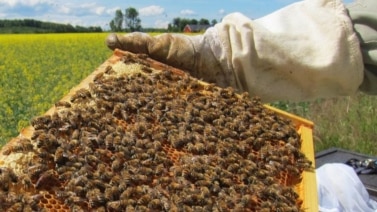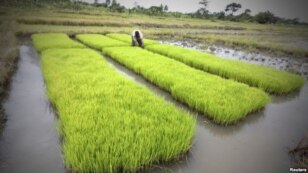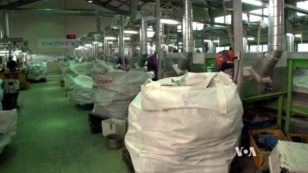Plant roots are important to life on earth. Roots take in water and nutrients that the plant needs to live and grow. They also help secure plants in dirt to prevent erosion - the breakdown of soil by natural forces.
Roots are the subject of a new exhibit at the United States Botanic Garden in Washington, D.C. It shows in great detail what is taking place underground and the ecosystem services roots provide.
The exhibit is called "Exposed: The Secret Life of Roots." Megan Freier went to the show recently.
"I was like, ‘Oh, an exhibit on roots (laughter). How boring can this be?' But then you walk in, and just, wow!"
Visitors to the Botanic Garden see dried roots hanging on a display wall in a large room. Some of the roots are from native prairie grasses. Others are from crop plants like wheat and corn. All of the roots are rolled up and dried up so they do not touch the floor. A few of the roots are several meters long.
Susan Pell is science and public programs manager at the U.S. Botanic Garden. She says this unexpected sight sends a powerful message to the visitors: Roots are the foundation for life.
"They are what absorb nutrients for the plants, absorb water for the plants to allow the plants to photosynthesize and to make sugars. And plants themselves are really what we depend on entirely as a species."
The roots appear to be growing out of a wide view picture of a farmer's field. Visitors can also see some of the grasses outside the Botanic Garden. They are growing with garden vegetables like carrots and beets.
Susan Pell takes hold of a soybean plant and explains why farmers depend on roots.
"They have these little nodules on them which contain a bacterium which fixes nitrogen. And that's sort of a fancy way of saying it makes nutrients available to plants that otherwise would not be available to those plants."
And, that is important because it helps plants grow.
Louisa Baylan lives in the southeastern state of Florida. Florida’s ecosystem is very different from the grasslands of the American Midwest. In the exhibit, she gets a sense of the problem in drought-stricken areas where roots run deep.
"If these have to go so deep into the ground and they need water for sustenance. You just really kind of wonder are we going to be able to sustain agriculture."
Program manager Susan Pell hopes visitors like Ms. Baylan leave with a new understanding of our natural systems and the urgency to protect them from environmental problems.
I'm Marsha James.
VOA’s Rosanne Skirble prepared this report. Marsha James adapted her story for Learning English. George Grow was the editor.
Words in This Story
erosion – n. the slow wearing away of something
nodules – n. a small lump on the root of a plant
sustenance - n. something that keeps something alive
ecosystem – n. everything that exists in an environment
absorb – v. to take in something like a liquid in a natural way
foundation – n. something that provides support for something





